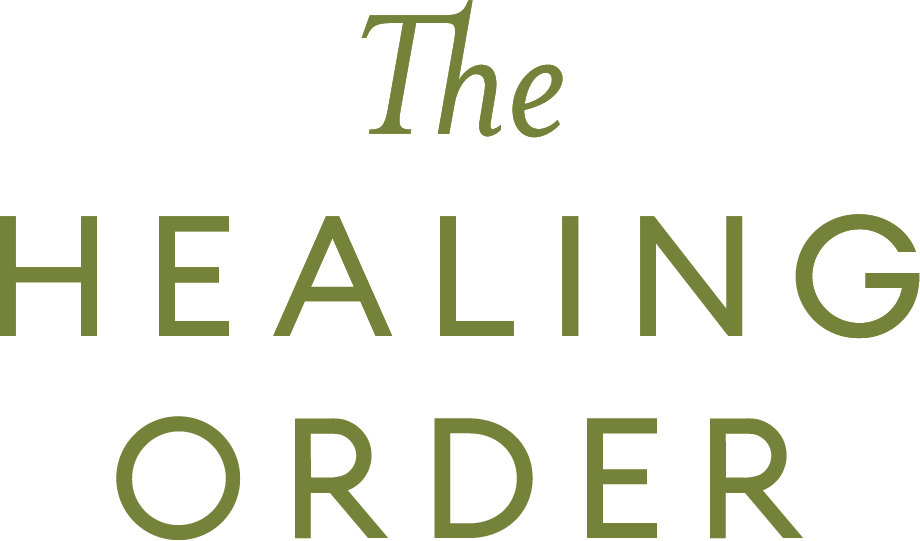Autumn: Drying, Cooling and Moving Inward (with Seasonal Congee Recipe)
By Ellen Goldsmith
“The three months of autumn are in charge of withering and decelerating the movement of growth.”
– Gao Lian, poet and medical Scholar
During the past two months of autumn, I have wondered a few things – would my tomatoes ever ripen, when would the predictably cool and rainy season in Portland arrive and how do we adapt to these unpredictable changes to our climate as the seasons (are supposed) to change? The tomatoes are still hanging on the vine, the rains have come and, yes, we are adapting to the changes.
Autumn’s sky, cloudy or not, is punctuated with the fire of leaves just before they dry up and fall to the ground. Our vital qi, brightened by summer skies, now begins its movement inward as we ready ourselves for winter. Autumn is a time for gathering ourselves for the year ahead. We move indoors. It is a great time restructure what we do and want to do, creating time and space for reflection and planning. Our intentions turn inward to protect the yang qi we built up over the summer season and nourish our interior and our yin.
Autumn is the pivotal season moving from yang to yin. The days are shorter, moving towards the shortest day at Winter Solstice. We in the West are into autumn, but according to the 24 Seasonal Nodes of the Chinese calendar we are approaching the first seasonal node of winter – Beginning of Winter on November 7th. This is the time to protect our inner warmth and to begin attending to nourishment and hydration that can protect us from the cooler and dryer air of the autumn, as well as the colds, viruses and flu that flourish in this season.
Common sense tells us that we need warming foods to keep our interior warm and active. Raw foods and cold foods and beverages only slow down our digestion and can add to us feeling cold. So, ditch the cold drinks and foods cold from the fridge. Warm your food before eating. Longer and slower cooking brings more warmth (yang) into foods along with hydration. Pull out the crock pots and slow cookers and enjoy the wide variety of soups and stews abundant with earthy root vegetables and wintery greens plus your favorite activating kitchen herbs and spices.
Each season has a flavor that helps us attune to the exterior climate. Autumn’s flavor is sour. The sour flavor activates our internal hydration system, activating our digestive juices and the fluids that bathe all the tissues of our body. This flavor, in small amounts, helps keep our mucous membranes of the nose and throat active, as well as protecting the Lung, the predominant organ of the Autumn season. It is found in combination with other flavors found in the autumnal fruits such as pomegranate, lemons, limes, apples, grapes and pears, some vegetables, fermented foods and herbs such as rosehips and hibiscus. Be sure to include these types of foods in your regular diet.
One of the most common dishes that add to warm, aid digestion and hydration are the porridges found all around the world. From oat porridge originating in Central Europe to grits from traditions of the Southern US to the Filipino staple of arroz caldo, polentina (or polenta soup) found in Italy, kasha (buckwheat porridge) of Eatern Europe, to congee (or jook) in Chinese traditions. These long-cooked delicious grain “soups” are warming, hydrating and easy to digest. The beauty of these porridges is that they are easily adapted to be sweet or savory. You can make porridges a simple breakfast or a full meal adding in vegetables, eggs, toasted nuts or seeds, chopped fresh herbs, sea vegetables, pickled vegetables, meat or fish. There are congees for all types of conditions cooked with different types of herbs or bases of herbal tea or soup stock
My memories of visiting China are laced with the delicious and wide variety of congees I ate for breakfast. The deep satisfying quenching of morning hunger for the entire morning long! Below you will find a simple congee adapted to Scatter the Cold for this autumn season. Try it! You might discover a whole new way to start the day.
RECIPE
Scatter-the-Cold Congee
There are infinite variations on congee that can satisfy and support health and healing. The souplike consistency of this dish makes it easy to digest. Here, the addition of green onions and ginger enliven the taste and is perfect when you are feeling achy due to an oncoming cold. Eat this congee and then get under the covers; you might break a sweat.
Makes 4 servings.
Ingredients
1 cup sweet (glutinous) brown rice — or brown Arborio rice (250 mL)
4 green onions, finely chopped (4 mL)
3 tbsp minced gingerroot (4mL)
Preparation Instructions
In a large saucepan, bring 8 cups (2 L) water to a boil. Add rice and return to a boil. Reduce heat to low, cover and simmer, stirring occasionally, for 2 hours. The congee should have a souplike consistency; if there is not enough liquid left in the pan, add up to ½ cup (125 mL) water.
Stir in green onions and ginger; simmer for 10 minutes, then stir well.
Serve immediately or transfer to an airtight container and refrigerate for up to 3 days. Reheat in a small saucepan over low heat before serving.
TIP FOR ENJOYMENT
Enjoy this congee once a day, like soup with a meal. It makes a savory, satisfying breakfast.
VARIATIONS
Substitute an equal amount of millet, barley or sweet (glutinous) white rice for the brown rice.
HEALTH TIP
When you’re sick, you can use herbal tea or vegetable broth in place of some or all of the water to cook the rice. Cooking the congee with an herbal tea or broth infuses the dish with healing ingredients, making it truly tasty medicine.
Enjoy!
To see more recipes, purchase Ellen’s book here or on Amazon here. Makes a great gift!
© 2017 All rights reserved: Nutritional Healing with Chinese Medicine: + 175 Recipes for Optimal Health, Ellen Goldsmith, MSOM, L.Ac., Dip.C.H., with Maya Klein, Ph.D.
CHINESE HERBALIST & LICENSED ACUPUNCTURIST
 Ellen Goldsmith is a nationally board certified, licensed acupuncturist and Chinese herbalist. Her integrative body centered and intuitive approach is grounded in decades of study and experience which are key to collaborating and working with people to help them reach their goals.
Ellen Goldsmith is a nationally board certified, licensed acupuncturist and Chinese herbalist. Her integrative body centered and intuitive approach is grounded in decades of study and experience which are key to collaborating and working with people to help them reach their goals.
She is known for her enduring confidence that each person has the power within to resolve challenges, grow and heal.
From working with AIDS patients in the 80s, to trauma survivors, to performing artists, to high functioning professionals, elders and young people, Ellen is deeply equipped to guide people through challenging issues.


